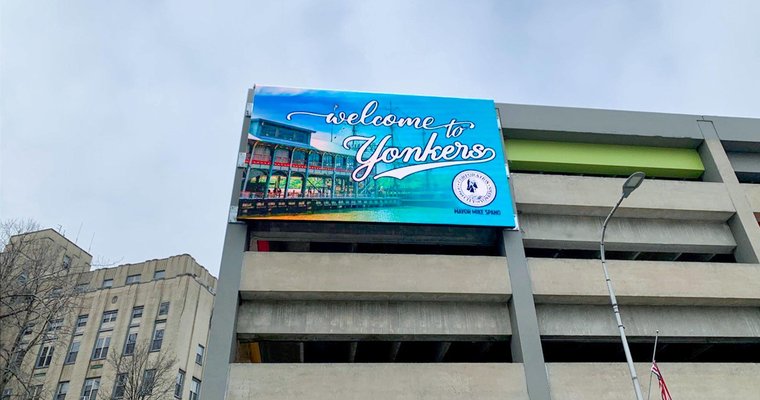
[ad_1]
While cutting-edge technology and data are key, good old-fashioned people skills and relationship-building (with customers and with your staff) are the strongest tools to reducing product shrink in micro markets.
 At left, Wayne Vandekraak of OptConnect; Ryan McWhirter, 365 Retail Markets, Bridger Keally, Panoptyc; Zachary Oliver, Dependable Break Room Solutions and Jeff Ping, Aramark Refreshments ponder ways to fight product shrink. Photo: Willie Lawless/Networld Media Group
At left, Wayne Vandekraak of OptConnect; Ryan McWhirter, 365 Retail Markets, Bridger Keally, Panoptyc; Zachary Oliver, Dependable Break Room Solutions and Jeff Ping, Aramark Refreshments ponder ways to fight product shrink. Photo: Willie Lawless/Networld Media Group
Micro markets, which came on the scene more than a decade ago, have rejuvenated the convenience services industry by offering more product variety and an overall improved customer experience compared to traditional vending.
One challenge, however, has been an increase in product shrink, as the “open shelf” format creates the opportunity for users to take items without paying.
A group of industry veterans offered insight on how micro market operators can manage product shrink during a session at the recent Self-Service Innovation Summit in Miami, “Product shrink in micro markets: What can you do?” Wayne Vandekraak, chief sales officer at OptConnect, served as moderator.
Customer communication key
The panelists agreed that it’s important for customer locations to recognize there is a theft risk with micro markets, and that if an issue arises, it will be largely up to the location how to respond. Hence, it is important for operators to address this issue with their locations at the start of the service.
“If you don’t have a collaborative relationship with your account, then it’s just not going to work,” said panelist Zachary Oliver, president at Dependable Break Room Solutions, an Upland, California based convenience services company. “Partnering with those loss prevention managers (on the client side) — they want to work with us because the same people that are stealing from us are also stealing from them. Look at it as a collaborative measure with them.”
In instances where location managers do not take an interest in controlling shrinkage, Oliver has had to relinquish the account or raise prices to cover the loss.
“We do have to walk away from some customers, or we have no problem just raising prices,” he said.
Shrinkage not always intentional
In some cases, the shrinkage is unintentional, said panelist Bridger Keally, sales director at Panoptyc, a firm focused on combating theft with a combination of technology, machine learning, data and human monitoring.
“So, if you get someone that understands how the kiosk works, such that they’re comfortable with it, and they can check out very fast, they’re definitely more likely to scan a couple items and then miss a very expensive item,” Keally said.
Operators can also enlist the patrons at the location in their effort to combat shrinkage.
“As far as preventative actions, the biggest thing you can do to prevent future theft is make the populace aware that it’s being actively reviewed and that something will happen,” Keally said. “We’ll actually post a picture [with a caption saying] ‘Gone/Missing,’ and then we’ll have a picture of a Monster (energy drink) on there. And then people (at the location) are now visually seeing, (saying) ‘hey, these guys can see what’s actually going on.’ That tends to help out a little bit, when you can identify it and then people know that you are going through and running your reports and doing your due diligence.”
Other tactics to consider
It may seem like a paradox, but another fruitful method in reducing product shrink involves scheduled sales of high-demand items at lower prices, said panelist McWhirter, vice president of product management at 365 Retail Markets Inc., a micro market technology provider.
“Something I’ve seen operators use as a strategy is to do a ‘power hour,’ where you’ll discount energy drinks from one to five, when it’s usually a ghost town in your micro market,” said McWhirter. This may discourage some would-be thieves from stealing energy drinks, which the panelists agreed are the most frequently stolen products.
Engage the route driver
 |
Zachary Oliver Dependable of Break Room Solutions explains loss prevention strategies to reduce product shrink. Photo: Daniel Brown/Networld Media Group. |
The panelists agreed it is important to involve the route service personnel in monitoring product shrink at locations.
Day-end check-ins with staff is your first go-to, according to panelist Jeff Ping, operations excellence manager at Aramark Refreshments.
“If our drivers are not communicating back that items are missing or misplaced, or that we’ve got a problem out in the field, it’s going to make the merchandisers look bad,” Oliver said. “So, there’s some accountability there in terms of making sure that that is being managed. Otherwise, our markets are just not going to be full.”
McWhirter agreed.
“You know, the most successful routes I’ve seen are [those with] drivers who are just charismatic and can connect with the location,” said McWhirter. “I’ve seen drivers develop relationships with customers and users, not necessarily to have a tattle-tale or a narc — but you’d be surprised what you hear as a driver if you only ask, or if you’re in tune with a location, and don’t have your air pods in while you’re doing the inventory. And they’ll tell you who’s stealing, not that it’s going to change anything, but you’ll get a barometer for the people who are actually using your service.
“I love the idea about the ‘missing’ poster of the Monster can,” McWhirter said. “Let people see that you’re raising the prices because of that one bad bully down the hallway, and watch how fast that person gets tarred and feathered…Simply having a sense of connection with that location, I think, can go a long way — aside from all the technology we can give you.”
 |
Wayne Vandekraak of OptConnect and Ryan McWhirter of 365 Retail Markets listen to Bridger Keally of Panoptyc. Photo: Daniel Brown/Networld Media Group. |
Review procedures
 |
Wayne Vandekraak of OptConnect poses a question to the panel. Photo: Daniel Brown/Networld Media Group. |
Aramark’s Ping cited the importance of having an effective inventory management process that is understood by the entire team. His own company identified ways to improve its inventory process and its guidance for its drivers.
“Everyone needed to know how the inventory moved through the business,” he said. “You know how it landed on our docks, how it got put onto a truck…how it got committed to that micro market and when to do the inventories, whether it was before or after you unloaded your dolly.”
Replace the micro market with vending?
In response to a listener’s question, Oliver acknowledged replacing micro markets with vending machines to keep theft under control. This is something that customers usually do not want to do, however.
Asked if offering automated retail as an alternative to vending or a micro market, Oliver said he has used some of these automated stores in the interest of saving some customer relationships. He noted, however, that the user has the opportunity to take more than one item once they’ve opened the automated store’s door, just as they do at a micro market.
Oliver further noted that when you add a new service format to your convenience services operation there can be new operational issues to consider.
The bottom line for controlling theft, for Oliver, is building customer relationships.
“Cultivating relationships is just sound business in every aspect of your operation, but specifically cultivating relationships with your client-side loss prevention managers is essential in reducing product shrink, and it shows that you have to invest in your business relationships just as much as you invest in cutting-edge technology and robust data,” Oliver said.
Editor’s Note: Daniel Brown, editor of Digital Signage Today, contributed to this report.
Elliot Maras is the editor of Kiosk Marketplace and Vending Times. He brings three decades covering unattended retail and commercial foodservice.
[ad_2]
Source link






